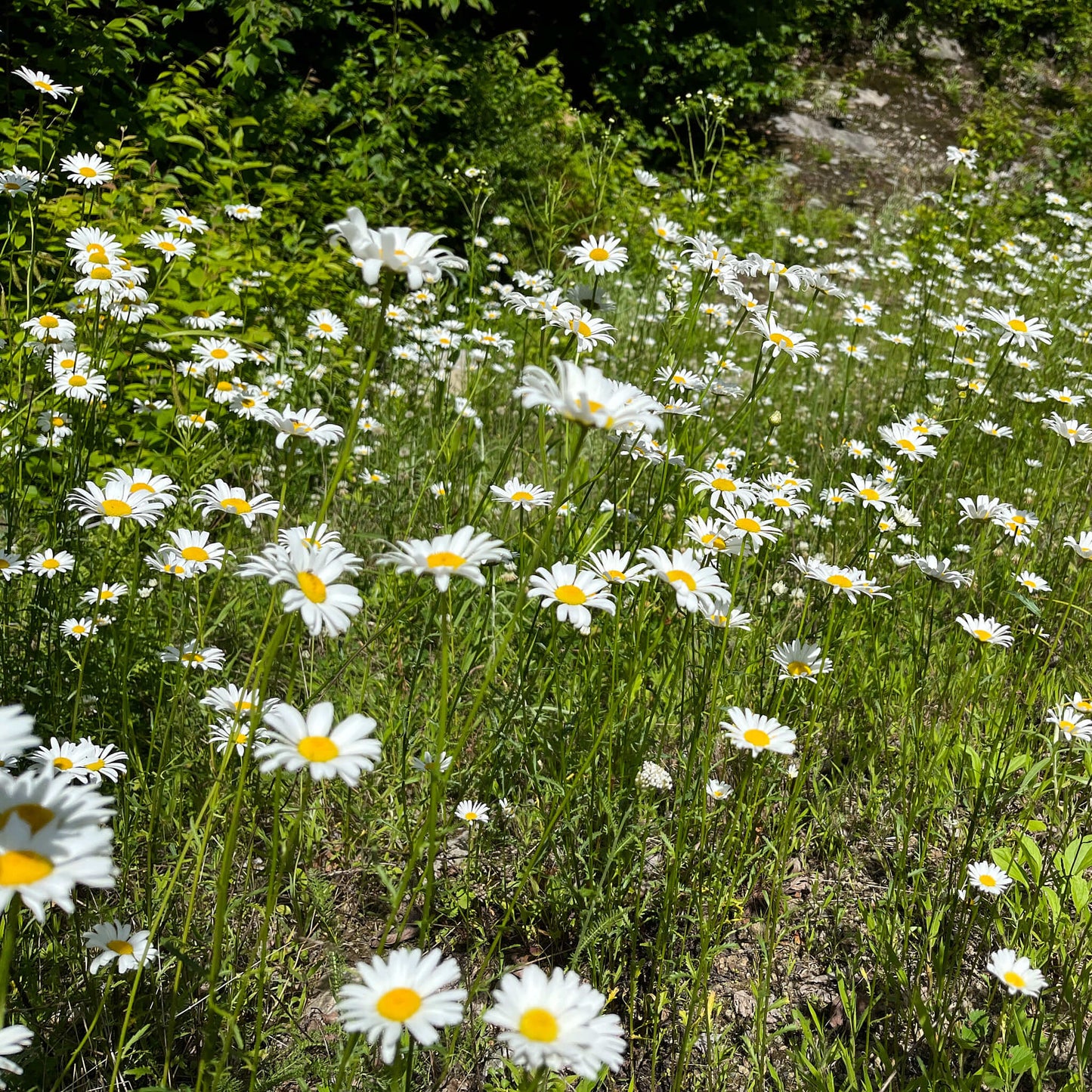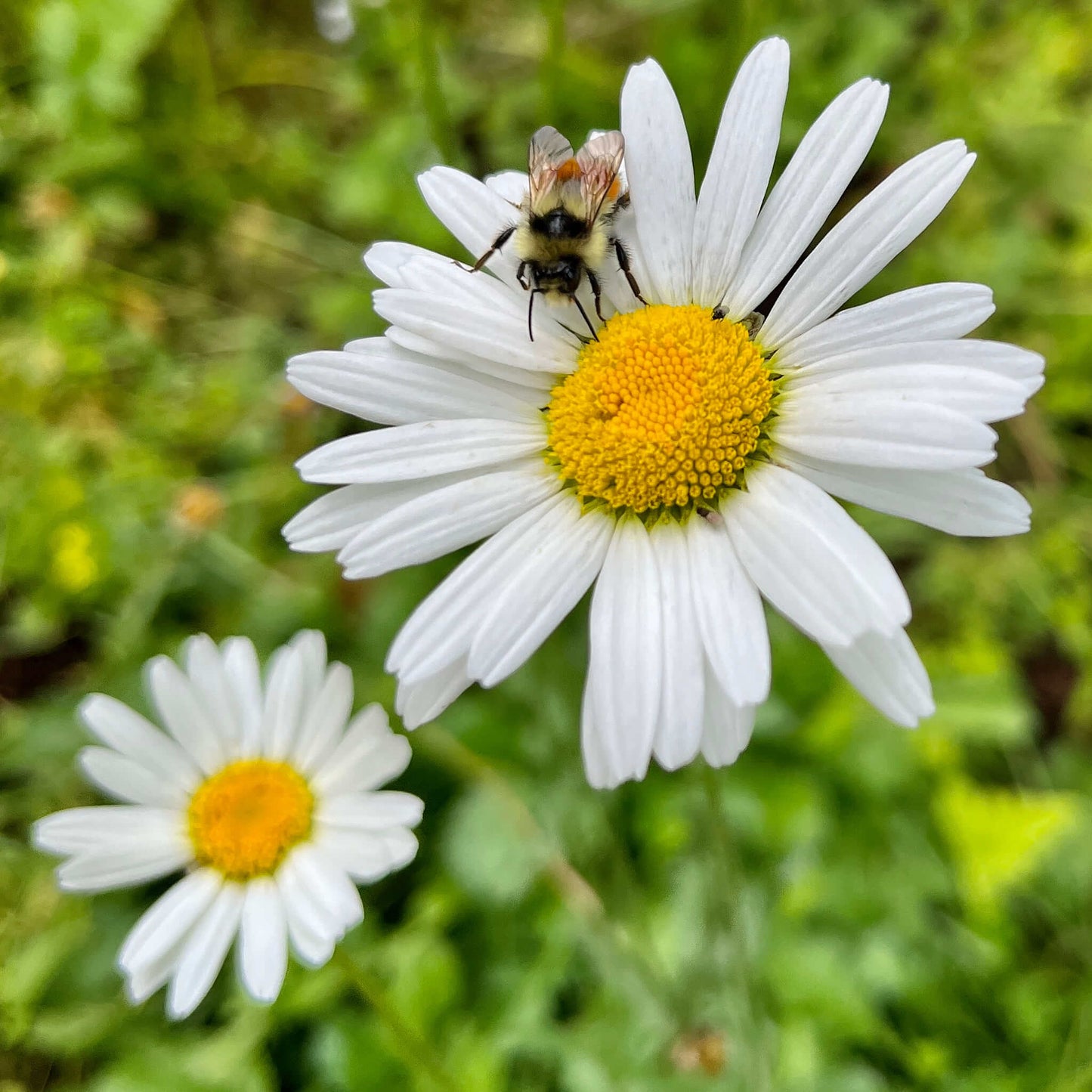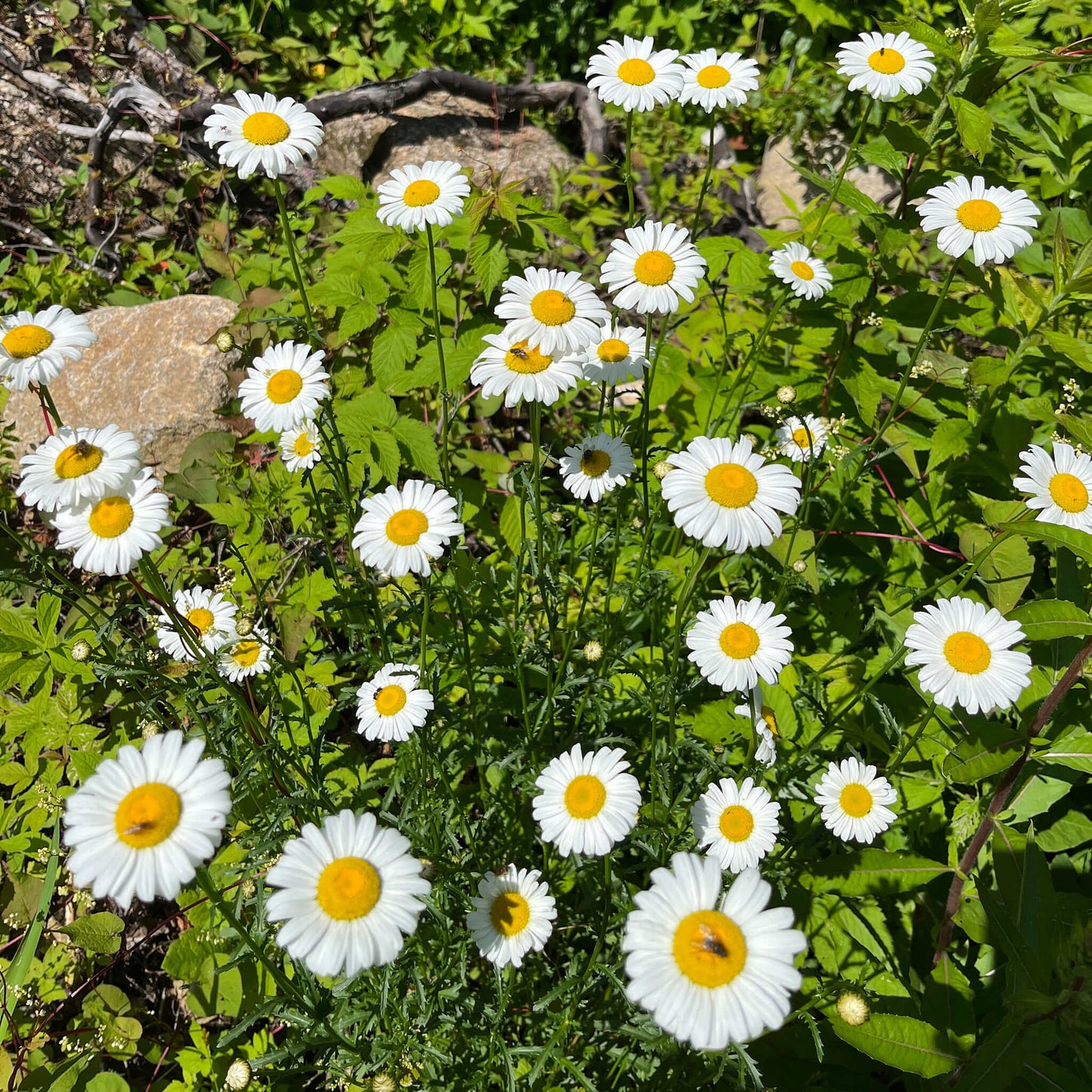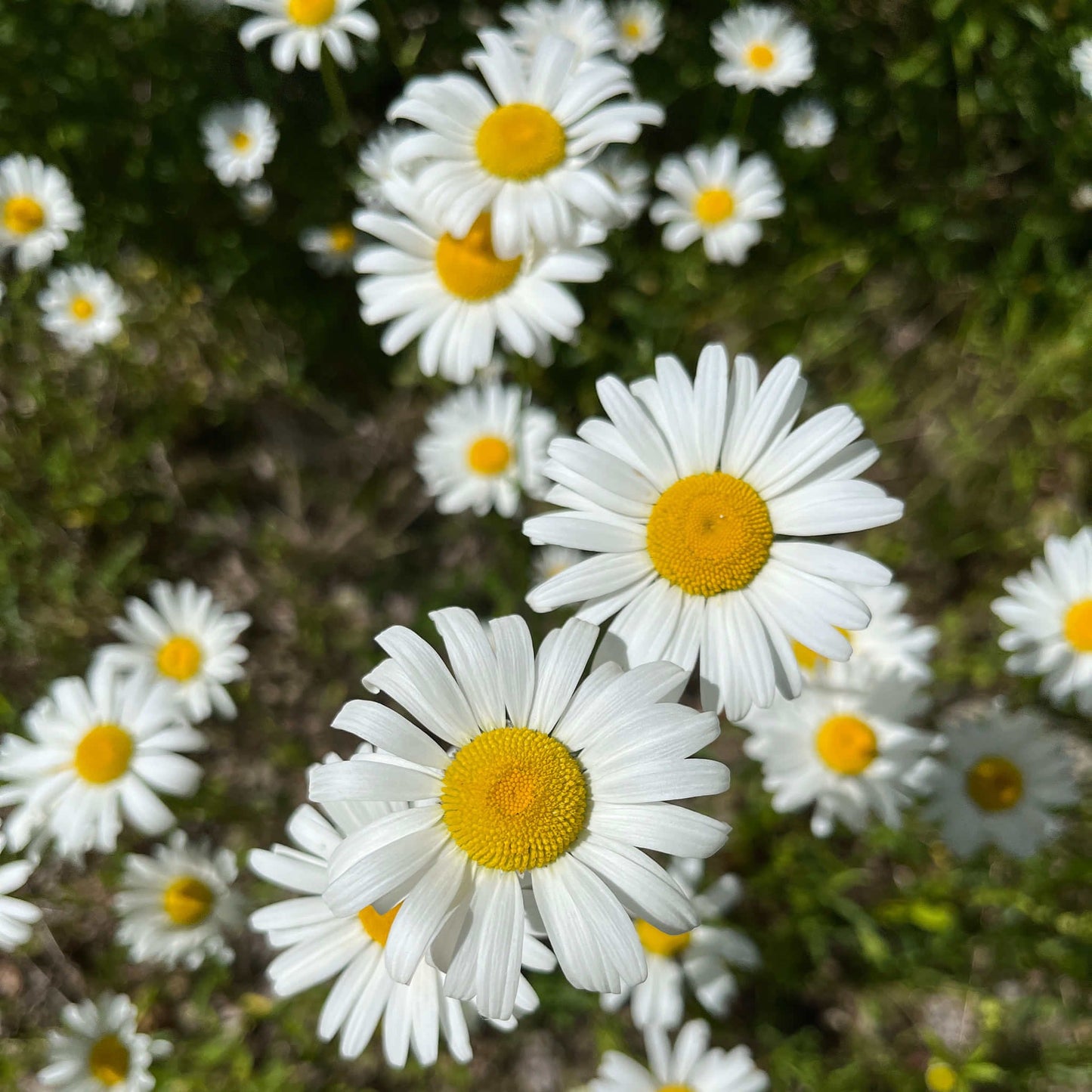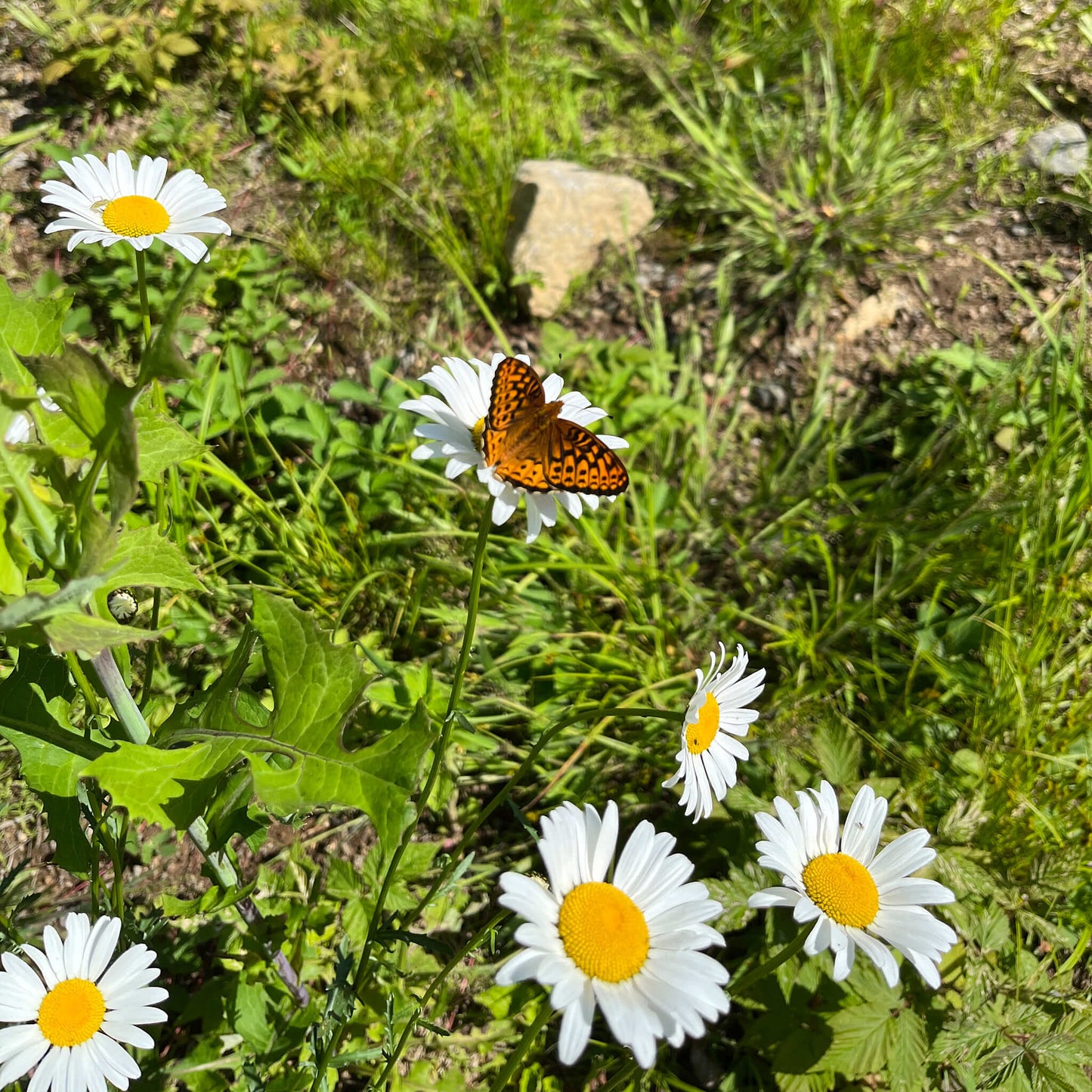This site is protected by hCaptcha and the hCaptcha Privacy Policy and Terms of Service apply.
For successful seedlings,
see the growing notes at the bottom of the page!
Oxeye daisy (Leucanthemum vulgare), also known as field daisy, is a well-known herbaceous perennial plant recognized for its white flowers with petals surrounding a bright yellow center, typical of daisies. It generally grows between 40 and 80 cm in height and blooms from June to August, starting in its second year. Its dark green foliage, consisting of serrated leaves arranged alternately along the stems, adds visual appeal. Very hardy, oxeye daisy easily adapts to well-drained soils and full sun, often found in grasslands, roadsides, and meadows.
Medicinal and Culinary Uses
Oxeye daisy has astringent, tonic, and mildly anti-inflammatory properties. It is traditionally used in infusions to relieve sore throats and mild digestive issues. The leaves and flowers are edible and can be added to salads or used as a garnish, providing a visual touch and a mild, herbal flavour.
Ecological Roles
Oxeye daisy attracts a wide variety of pollinators, including bees, butterflies, and other insects, which benefit from its nectar and pollen. It helps stabilize natural meadows and supports biodiversity in herbaceous ecosystems. Easily naturalizing, it provides habitat for various insects, thereby contributing to the health of meadows and open spaces.
Akène cannot assume any responsibility for the use of plants for therapeutic purposes. Always seek advice from a professional before using a medicinal or edible plant.
Sowing and Growing
Technical Details
Seeds per packet: 200
Family: Asteraceae
Scientific name: Leucanthemum vulgare
Life cycle: Perennial
Hardiness zone: 3
Soil type: Loamy to clayey
Soil moisture level: Dry to medium
Soil - additional attributes: Well-drained, poor
Light: Sun, part shade
Blooming: Second year
Spacing: 30 cm
Height: 40 to 80 cm
Deer resistance: Moderate to high
Stratification: No
Scarification: No
Germination time: 5 to 20 days
Sowing depth: Surface

